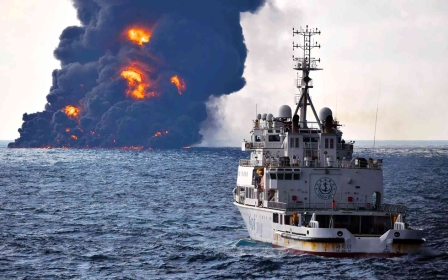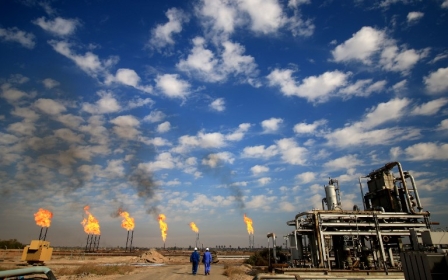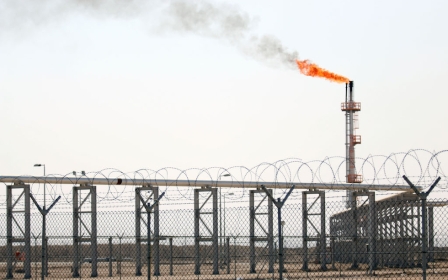Oil from sunken Iranian tanker reaches Japan islands

Oil that reached islands in southern Japan earlier this month is likely to have come from the sunken Iranian tanker Sanchi, the Japan Coast Guard said on Thursday.
Samples of oily matter that washed up on 8 February on the shores of the Okinoerabu and Yoron islands in the Amami chain were found to be linked to the Sanchi's sinking, the Coast Guard said.
The Sanchi sank on 14 January after colliding with a freighter on 6 January in the world's worst oil tanker disaster in decades.
"Oily matter that arrived at the shores of the two islands is extremely likely to be linked to the Sanchi tanker incident, considering the similarity of the oil and the fact that there has not been any marine disaster involving oil spill in the nearby sea area," a Coast Guard official told Reuters by phone on Thursday.
Black clumps of oily matter first washed up on the shores of Takarajima island on 28 January and other matter has since arrived at 21 other islands in southwestern Japan that are part of a chain of islands that includes Amami-Oshima and Okinawa, areas famous for pristine beaches and reef systems.
The Sanchi was carrying 136,000 tonnes of light crude oil from Iran, which translates to more than 800,000 barrels, and ran into Hong Kong-registered bulk freighter the CF Crystal, sparking a fire that Chinese rescue ships struggled to extinguish.
It sank after a new and massive fire erupted, sending a cloud of black smoke as high as 1km above the East China Sea.
Chinese ships scrambled to clean up a massive oil spill amid fears of devastating damage to marine life.
The type of condensate oil carried by the Sanchi does not form a traditional surface slick when spilt, but is nonetheless highly toxic to marine life and much harder to separate from water.
The area where the ship went down is an important spawning ground for species including the swordtip squid and a wintering ground for species like the yellow croaker and blue crab, among many others, according to Greenpeace.
It is also on the migratory pathway of numerous marine mammals, including humpback and gray whales.
Most of the fuel evaporated after the ship caught fire.
The bodies of two sailors were recovered from the ship, while a third body was pulled from the sea near the vessel. The remaining 29 crew of the ship are presumed dead.
On 17 January, the Chinese government said the sunken tanker had created two oil slicks.
Japan's environment ministry said in January it saw little chance that the spill would reach Japanese shores.
Seawater samples taken from 29 January to 2 February at 14 different locations offshore southern Japan detected no oil pollution from the sunken tanker, the Coast Guard said in a statement on Wednesday.
An oil slick continues to be seen near where the Sanchi sank. The slick is located about 315 km (197 miles) west of Amami-Oshima island and is about 700 metres long and 20 metres wide, though oil has been evaporating from the fringes, the Coast Guard said in a statement on Thursday.
Japanese and Chinese patrol boats have been searching for the missing crew in the area and sailing over the slick to try to dissipate the oil, it added.
New MEE newsletter: Jerusalem Dispatch
Sign up to get the latest insights and analysis on Israel-Palestine, alongside Turkey Unpacked and other MEE newsletters
Middle East Eye delivers independent and unrivalled coverage and analysis of the Middle East, North Africa and beyond. To learn more about republishing this content and the associated fees, please fill out this form. More about MEE can be found here.




